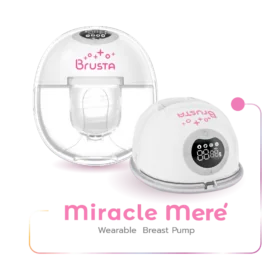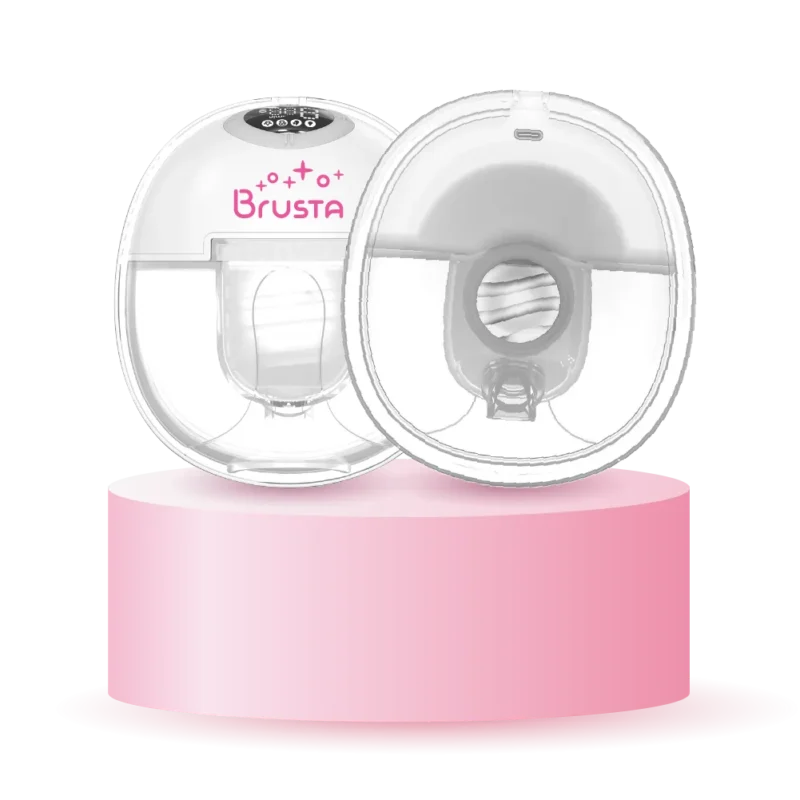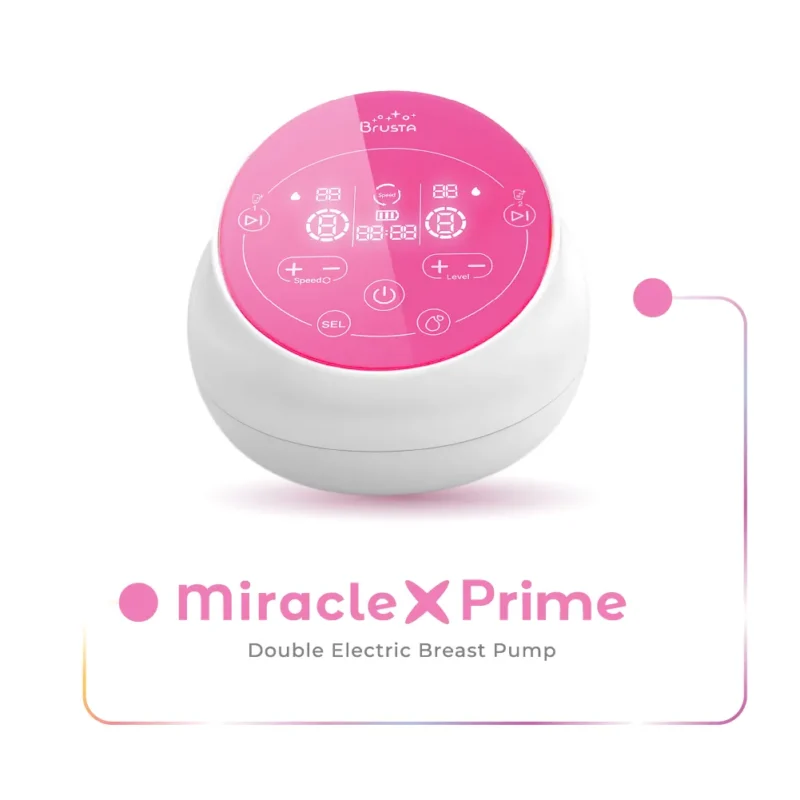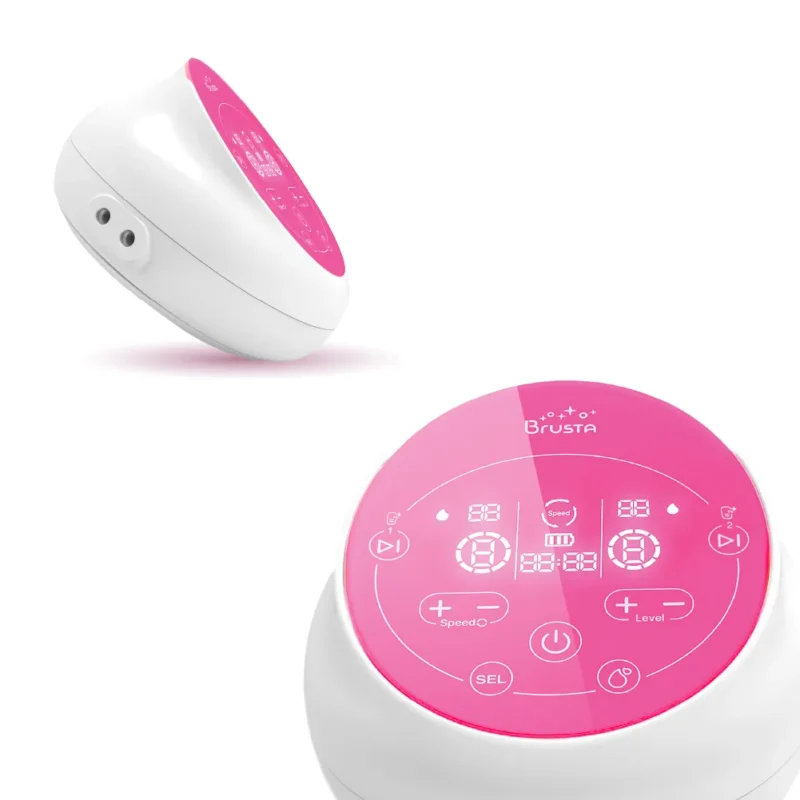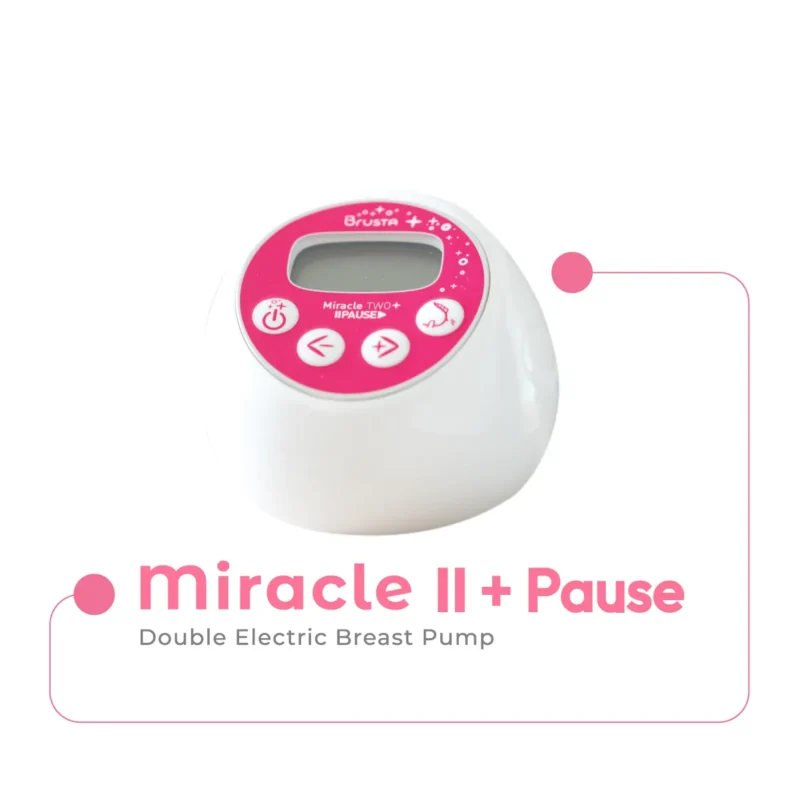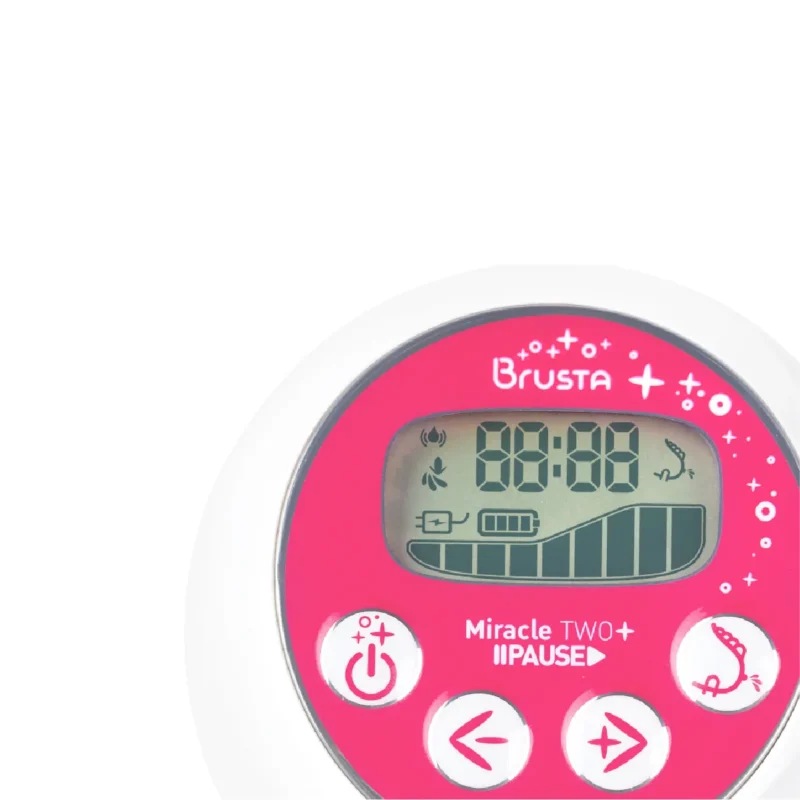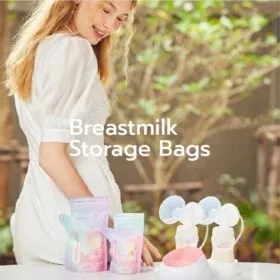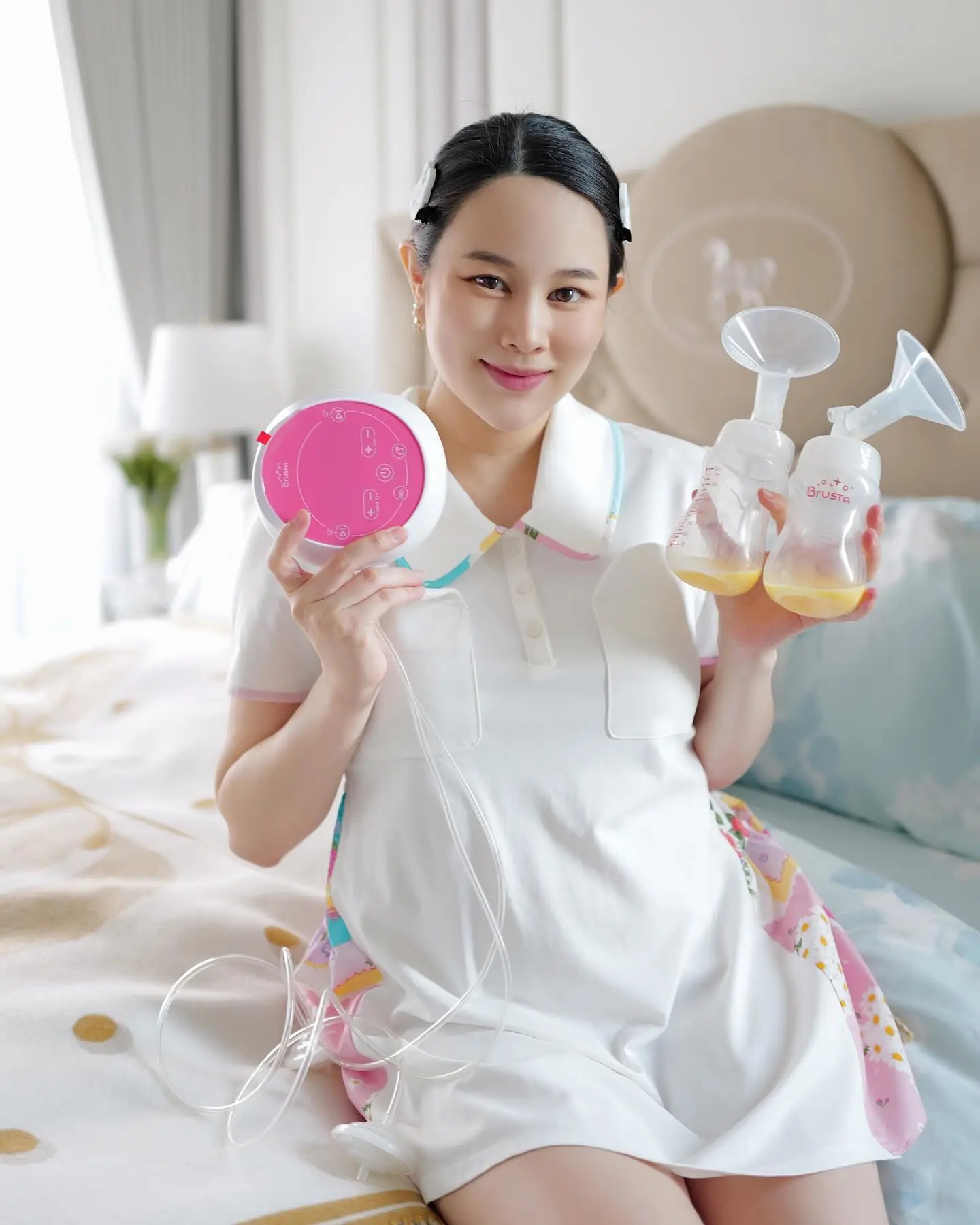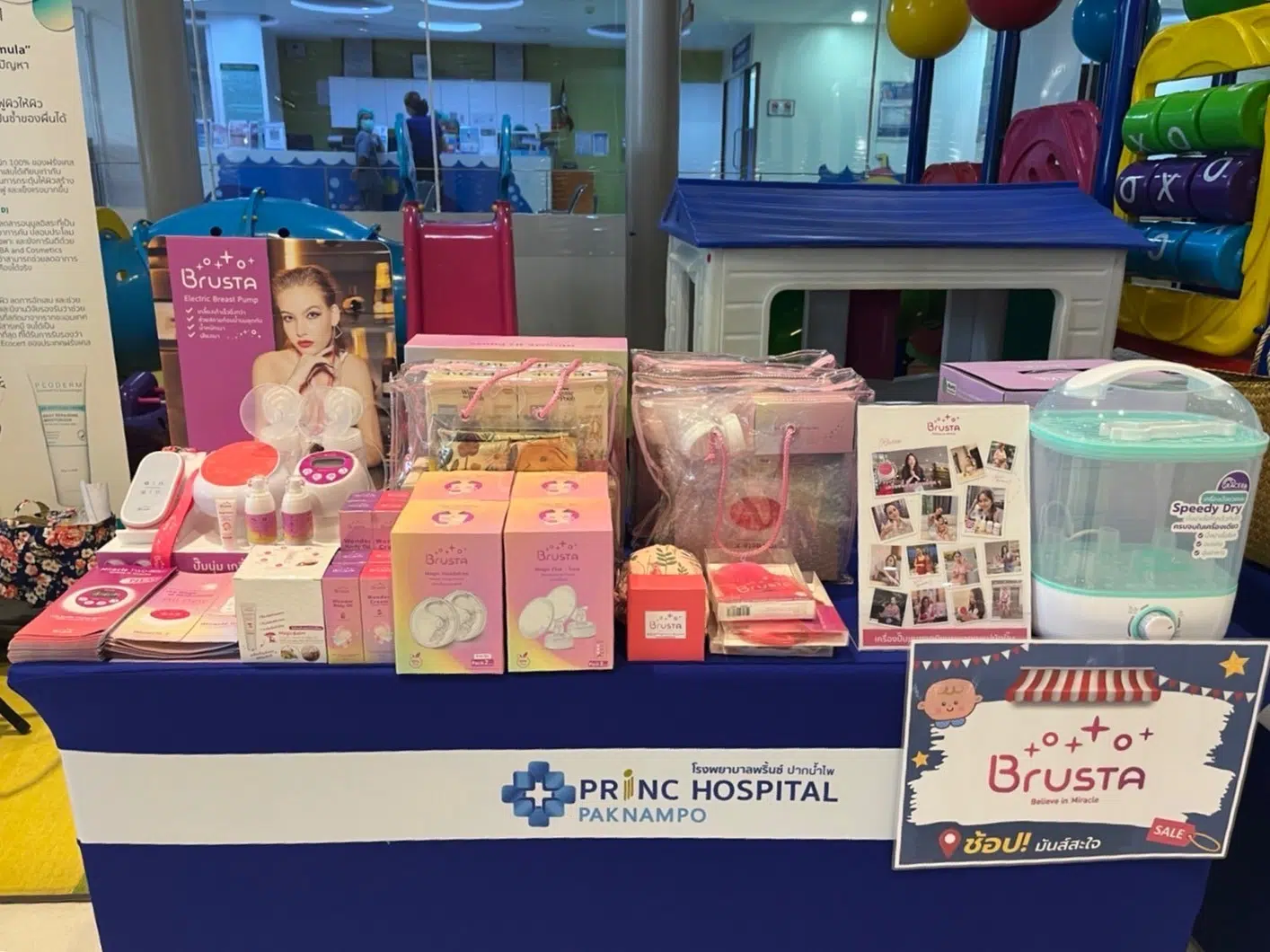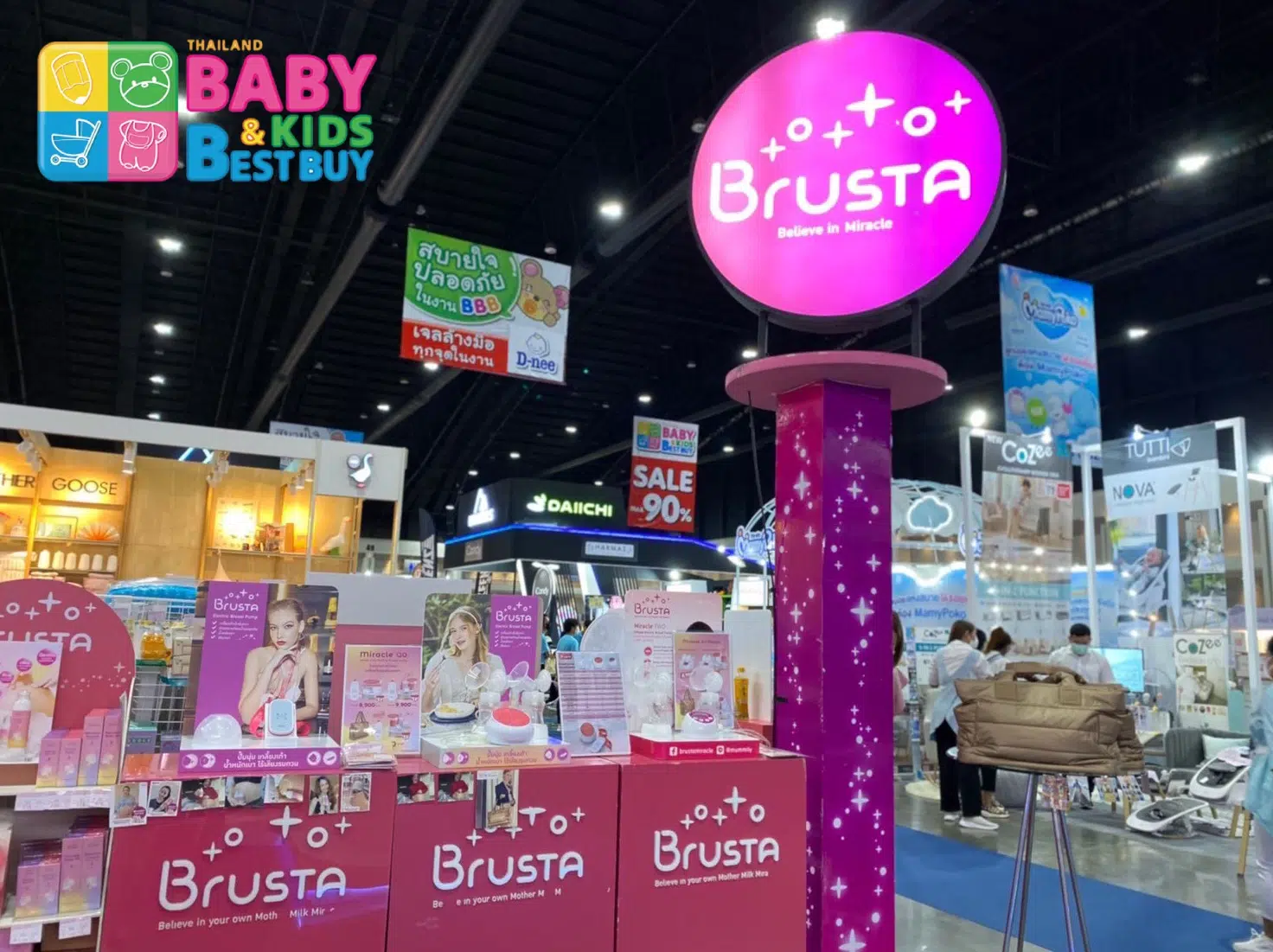

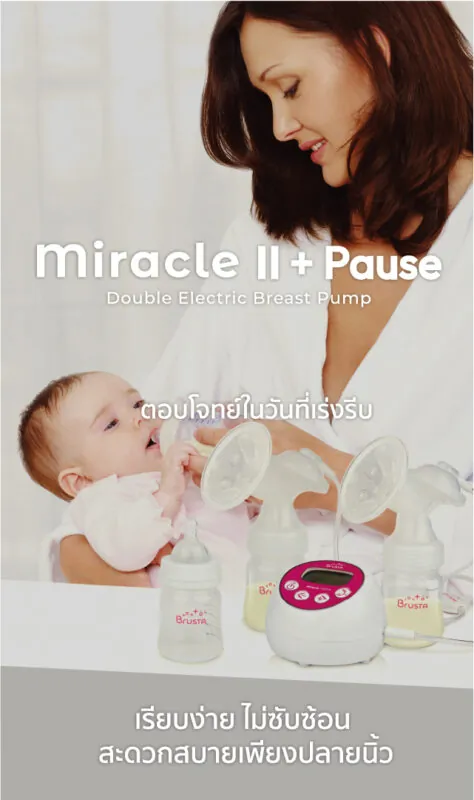



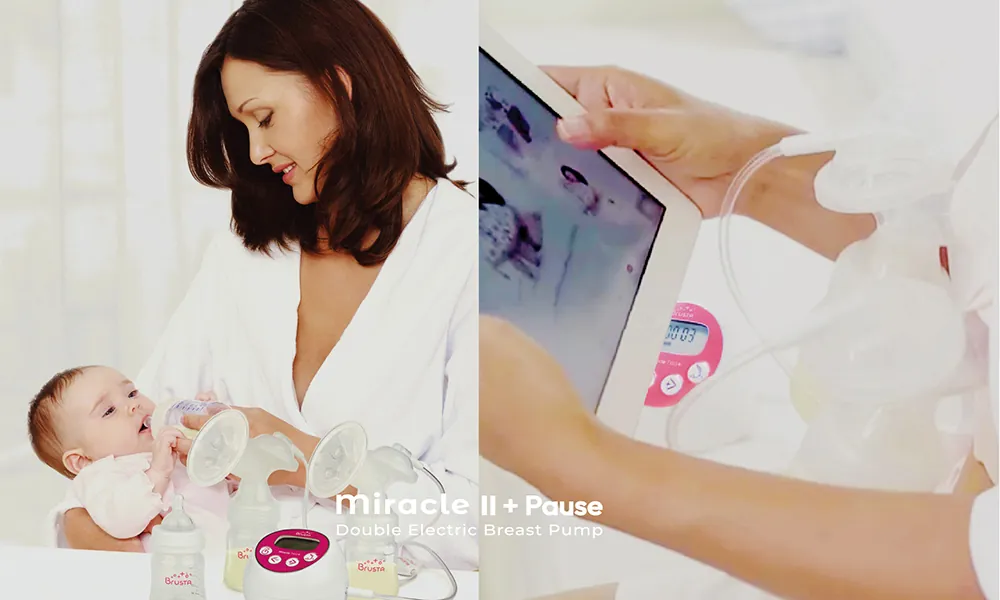
เคล็ดลับการใช้เครื่องปั๊มน้ำนมแบบมือโปร
พร้อมวิธีป้องกันเต้านมคัดปั๊มนมแล้วไม่เจ็บหัวนม
การปั๊มน้ำนม คือ ใช้เครื่องปั๊มน้ำนมหรือมือคั้นน้ำนมจากเต้าคุณแม่มาสำรองไว้ให้ลูกน้อย มีประโยชน์มากตอนที่คุณแม่ไม่สามารถให้ลูกเข้าเต้าได้ หลายคนอาจคิดว่าการปั๊มน้ำนมแบบใช้เครื่องเป็นเรื่องที่น่าปวดหัว แต่ถ้ารู้เคล็ดลับ และเทคนิคที่ถูกต้องรับรองไม่ยากอย่างที่คิด แถมยังสามารถแก้ปัญหาเต้านมคัด ปั๊มนมแล้วเจ็บหัวนม และเพิ่มการผลิตน้ำนมได้ด้วย
เลือกช่องทางสั่งซื้อ
เครื่องปั๊มนมแฮนด์ฟรี ไร้สาย BRUSTA MIRACLE MERE'
Brusta Miracle Mere’ เครื่องปั๊มนมไร้สาย
แสนสะดวก เงียบ ทรงสลิมแนบเนียนกับเต้า
ปั๊มได้ต่อเนื่อง 8 รอบ รองรับการสั่งการผ่านแอป
เลือกช่องทางสั่งซื้อ
เครื่อง Brusta miracle X-PRIME อัจฉริยะ 2 มอเตอร์
Brusta Miracle X-Prime ยอดนิยม ที่มีแบตเตอรี่ในตัว เกลี้ยงเต้าด้วย 4 โหมดการทำงานอัจฉริยะ กระตุ้น ปั๊ม รีดน้ำนมค้างเต้า สลายก้อนน้ำนมอุดตัน เสียงเงียบ น้ำหนักเบา ใช้งานง่าย ตอบโจทย์คุณแม่ทุกไลฟ์สไตล์
เลือกช่องทางสั่งซื้อ
เครื่องปั้ม Brusta miracle Two Plus Pause
ที่ปั๊มแบบคู่ แรงดูด 260 – 340 mmHg โหมดนวดกระตุ้น ความถี่ 100 ครั้ง / นาที โหมดปั๊ม ความถี่ 46 ครั้ง / นาที ต้อง Brusta Miracle Two Plus Pause
Brusta Products
Blog
THE STORY BRUSTA
Brusta’s Journey Started off from personal experience and discovering undesirable problems from using breastpumps as a mother with a new born child By understanding wholehearthedly whether you did everything as the doctor advice or did everything accordingly to all the tips and tricks every guide for new mothers to breastpump properly , eventually.
ช่วงการปั๊มน้ำนม และรอบปั๊มนมที่เหมาะสม
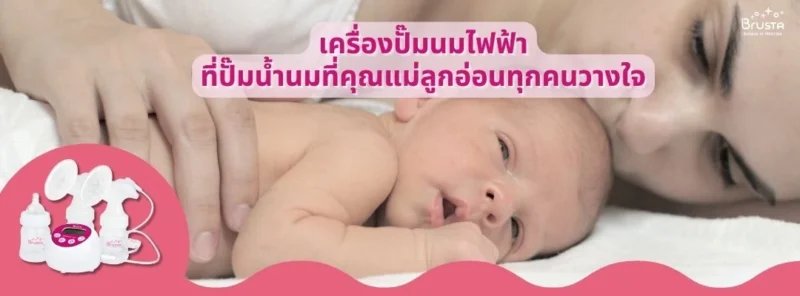
มาเริ่มกันที่ความรู้พื้นฐานก่อนเลย ช่วงเวลาที่เหมาะสมในการปั๊มขึ้นอยู่กับความสะดวก และวัตถุประสงค์ในการสำรองน้ำนมของคุณแม่ หลัก ๆ จะเริ่มปั๊มกัน 2 ช่วง คือ
1. ช่วงแรกคลอด สำหรับคุณแม่ที่ติดปัญหาไม่สามารถให้ลูกเข้าเต้าได้ ไม่ว่าจากความเจ็บป่วย หรือ อื่น ๆ
2. ช่วงคลังคลอด 4 – 6 สัปดาห์ ซึ่งเป็นช่วงเวลาที่คุณลูกจะมีความต้องการดื่มนมมากขึ้น การปั๊มนมในช่วงเวลานี้ก็เพื่อสำรองน้ำนมให้เพียงพอต่อความต้องการของคุณลูกตลอดเวลานั่นเอง ในกรณีที่ลูกยังสามารถเข้าเต้าได้รอบการปั๊มช่วงนี้ปั๊มได้วันละ 2 – 3 รอบ แต่ถ้าลูกเข้าเต้าไม่ได้รอบปั๊มนมก็จะเพิ่มเป็น 8 – 12 รอบต่อวันหรือ ทุก 2 -3 ชั่วโมง ตามความต้องการดื่มนมของลูกในแต่ละวัน
นอกจาก 2 ช่วงนี้แล้วคุณแม่บางคนจำเป็นต้องปั๊มนมให้ลูกจนถึงช่วงหย่านม จากปัญหาการเข้าเต้า ซึ่งถ้าเป็นแบบนี้รอบปั๊มนมก็จะอยู่ที่ 8 – 12 รอบต่อวัน
ประเภทของการปั๊ม โดยใช้มือและเครื่องปั๊มน้ำนม

- ใช้เครื่องปั๊มนม เป็นการกระตุ้นการหลั่งน้ำนม มีหลายระบบทั้งแบบไฟฟ้า แบบใช้แบตเตอรี่ และแบบมือ ยกตัวอย่างเช่นของแบรนด์ Brusta รุ่น Miracle ที่ใช้ระบบไฟฟ้า แต่เป็นแบบพกพา สามารถใช้งานนอกสถานที่ได้สะดวก และเป็นที่ได้รับความนิยมเป็นอย่างมาก
- ปั๊มนมด้วยมือ หรือ การบีบนม เป็นการใช้มือของคุณแม่บีบกระตุ้นน้ำนม
เตรียมความพร้อมก่อนใช้ปั๊มนม

ควรมีการเตรียมความพร้อมทั้งก่อน และระหว่างการปั๊มนม เพื่อเพิ่มประสิทธิภาพในการเก็บสำรองน้ำนมของคุณแม่ และยังสามารถลดปัญหาการปั๊มนมที่จะตามมา อย่างใช้เครื่องปั๊มแล้วนมไม่ถูกดูดออกมาได้ด้วย
- พักผ่อนให้เพียงพอ
- ดื่มน้ำอย่างน้อย 3 -4 ลิตร ต่อวัน
- ทานอาหารที่มีประโยชน์ เน้นอาหารกลุ่มโปรตีน และอาหารที่กระตุ้นการผลิตน้ำนม เช่น หัวปลี ฟักทอง ตำลึง เป็นต้น
เคล็ดลับการใช้เครื่องแบบมือโปร
- ล้างอุปกรณ์ทุกอย่างทั้งที่ใช้ปั๊มน้ำนม ภาชนะสำหรับเก็บน้ำนม ทำความสะอาดเต้านม และล้างมือก่อนทุกครั้งที่จะมีการปั๊ม เพราะเด็กแรกเกิดมีภูมิต้านทานเชื้อที่ต่ำ ทุกอย่างจึงควรปลอดเชื้อมากที่สุดเท่าที่จะเป็นไปได้
- สร้างบรรยากาศแห่งความผ่อนคลายก่อนการบีบ หรือ ปั๊มนม ลดความเครียด และความกังวล เพราะมันสามารถขัดขวางประสิทธิภาพของการปั๊มนมได้
- นวดผ่อนคลายรอบเต้านม เตรียมกรวยที่เชื่อมกับภาชนะบรรจุน้ำนมของเครื่องปั๊มให้เรียบร้อย
- วางกรวยปั๊มที่กลางลานนม หรือ หัวนม ใช้มือหนึ่งข้างประคองเต้านม โดยไม่ออกแรงดันเต้านมให้เข้าไปอยู่ในกรวยมากเกินไป เพราะจะทำให้เป็นรอยที่เต้านมได้
- ความเร็วการใช้ที่ปั๊มนมทั้งแบบมือ และแบบเครื่องให้เริ่มจากน้อยไปมาก และเมื่อน้ำนมไหลคงที่ก็ลดความเร็วในการปั๊มลง แล้วค่อยเพิ่มการปั๊มให้เร็วขึ้นอีกครั้งเพื่อเลียนแบบจังหวะการดูดนมของคุณลูก
- หลังจากปั๊มนมไปได้ 15 นาที น้ำนมจะเริ่มเกลี้ยงเต้า ให้นำกรวยออกจากเต้านม แล้วนำภาชนะที่บรรจุน้ำนมอยู่เก็บไว้ในที่เย็นทันที เพื่อรักษาประสิทธิภาพของน้ำนม และป้องกันการปนเปื้อนเชื้อจากภายนอก
ทำความสะอาดอุปกรณ์ที่ใช้ปั๊มนมทันที เพื่อป้องกันการสะสมของเชื้อก่อโรคที่จะทำให้คุณลูกป่วยทีหลังได้
ปัญหาที่มักพบตอนปั๊มน้ำนม พร้อมวิธีป้องกัน
ไม่ว่าจะปั๊มนมด้วยมือ หรือ ใช้เครื่องช่วยก็สามารถเกิดปัญหาระหว่างการใช้งานได้ แต่ก็สามารถป้องกันการเกิดปัญหาได้เช่นกัน
- ท่อน้ำนมอุดตัน
ทำให้เกิดการบวมแดง หรือ กดแล้วเจ็บ อาจเกิดจากการที่ปั๊มนมออกมาไม่เกลี้ยงเต้า โดยเฉพาะการปั๊มแบบมือ ทำให้มีน้ำนมตกค้างอยู่ และน้ำนมพวกนี้แหละที่อุดตันสร้างความเจ็บปวดให้คุณแม่ ดังนั้นทุกครั้งที่ปั๊มนม ต้องปั๊มให้เกลี้ยงเต้าทุกครั้ง
- เต้านมอักเสบ
ปัญหานี้มักต่อเนื่องมาจากการปั๊มน้ำนมไม่เกลี้ยงเต้า ทำให้เชื้อโรคเข้าไปเจริญอยู่ในน้ำนม จึงเกิดการอักเสบขึ้น สามารถป้องกันได้โดยการปั๊มน้ำนมให้เกลี้ยงเต้า แต่เมื่อเกิดขึ้นแล้วก็แก้ได้โดยการปั๊มเอานมส่วนที่ค้างเต้าออกมาก่อน ซึ่งต้องปั๊มด้วยความเร็วสูง ถ้าใช้เครื่องปั๊มแบบไฟฟ้า ก็มักมีระบบรีดน้ำนมค้างเต้า สำหรับแก้ปัญหานี้โดยเฉพาะ
- หัวนมแตก
ปั๊มนมแล้วเจ็บหัวนม ปัญหานี้สามารถเกิดได้ เมื่อปรับระดับแรงดูดสูงเกินไป หรือเลือกกรวยปั๊มที่ขนาดเล็กกว่าขนาดเต้านม ดังนั้นก่อนที่จะเลือกซื้อ นอกจากราคาเครื่องปั๊มนมจะต้องเหมาะสมแล้ว ขนาดของกรวยก็ต้องเหมาะสมกับขนาดเต้าคุณแม่ด้วย ถ้าไม่มั่นใจสามารถปรึกษาร้านขายเครื่องปั๊มนมโดยเฉพาะ หรือ ร้านขายสินค้าเด็กแรกเกิดได้
ป้องกันปัญหาการปั๊มนมได้อย่างไร
ปัญหาจากการปั๊มนมที่กล่าวมาสามารถป้องกันได้เบื้องต้นจากการเลือกเครื่องปั๊มที่เหมาะสม โดยเฉพาะเรื่องของระบบที่จะคอยแก้ปัญหาจากการเกิดท่อนมอุดตันได้ เช่น Brusta Miracle มาพร้อมระบบไฟฟ้า และยังเป็นแบบพกพา ที่มีโหมดสลายท่อน้ำนมอุดตัน และรีดน้ำนมที่ตกค้างจากเต้าได้ ลดปัญหาที่จะตามมา อย่างหัวนมแตก ท่อน้ำนมอุดตัน และเต้านมอักเสบทั้งนี้ ไม่ว่าจะเลือกแบรนด์ไหน ก็ควรเลือกตามลักษณะการใช้งาน และความเหมาะสมกับลักษณะทางกายภาพของคุณแม่เป็นหลัก
Trustindex ตรวจสอบว่าแหล่งที่มาดั้งเดิมของรีวิวคือ Google ให้คำแนะนำเกี่ยวกับสินค้าเด็กดีมากครับตรวจสอบโดย Trustindexตรารับรองของ Trustindex เป็นสัญลักษณ์สากลของความไว้วางใจ เฉพาะบริษัทที่ยอดเยี่ยมเท่านั้นที่สามารถรับตรารับรองได้ซึ่งมีคะแนนรีวิวสูงกว่า 4.5 จากการรีวิวของลูกค้าในช่วง 12 เดือนที่ผ่านมา อ่านเพิ่มเติม


 ไทย
ไทย